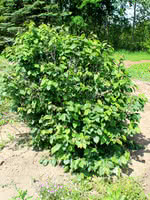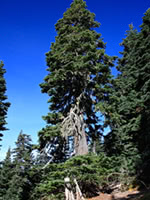Mon-Fri 9am - 5pm Mountain time
Beaked Hazelnut vs Western Red Cedar
Corylus cornuta
Thuja plicata
NOT AVAILABLE THIS SEASON - MIGHT RETURN
NOT AVAILABLE THIS SEASON - MIGHT RETURN
Beaked Hazelnut is a multi-stemmed, deciduous shrub native to North America.
It features smooth, grey bark and edible nuts. Beaked Hazelnut prefers a rich sandy-clay loam but will grow on poorer sites, and can be used as an understory shrub.
Note: You want more than one hazelnut to improve yields.
Western Red Cedar is native to the Pacific Northwest, and is the largest tree in the cypress family. Featuring horizontal branching with scale-like dark green foliage that has a strong aroma. The wood is naturally durable and light, and is resistant to decay and insects, making it sought after for house siding, paneling, furniture, and fences. This is British Columbia's official tree.

